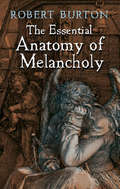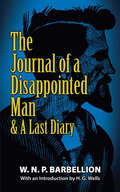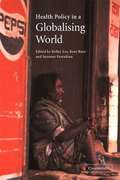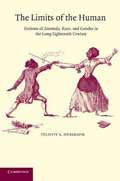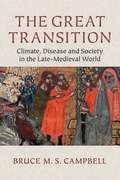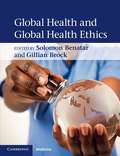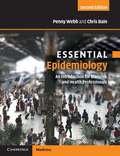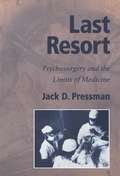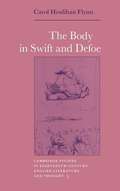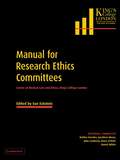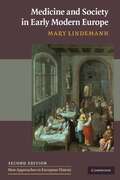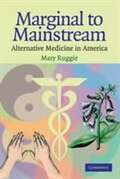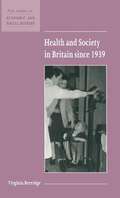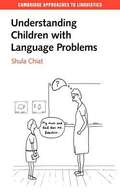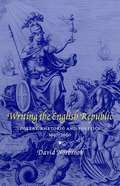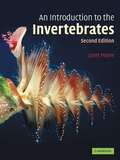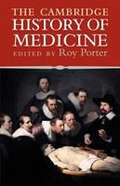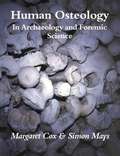- Table View
- List View
The Essential Anatomy of Melancholy
by Robert BurtonEnglish churchman and scholar Robert Burton (1577-1640) was a passionate student of medicine, history, literature, and science — the whole of human knowledge. This witty and eloquent genius devoted most of this life to writing The Anatomy of Melancholy, one of the richest, most inexhaustible books in the English language.Ostensibly an elaborately systematized medical treatise dealing with various morbid mental states — their causes, symptoms, and cures — the Anatomy is much more: a compendium of memorable utterances on the human condition in general, compiled from classical, scholastic, and contemporary sources. For this edition, the editors carefully selected passages of the most psychological and general interest, eliminating the nonessential material but retaining the incomparable humor, eccentric charm, imagination, and thought-provoking appeal of the original.In short, readers will find here the essence of Burton's vast book — the passages that, according to noted scholar W. H. D. Rouse, reveal the author's "eternal freshness, his own ingenuous interest, [and] his boyish delight in a good story."
The Journal of a Disappointed Man: & A Last Diary
by W.N.P. BarbellionPublished shortly before the author's death in 1919, The Journal of a Disappointed Man presents a remarkable memoir that addresses struggles with poverty, inadequate education, and the creeping paralysis of multiple sclerosis. Yet author W. N. P. Barbellion manages to write with uplifting eloquence and passion of his love for family, natural history, music, and literature. Told with a thoroughly modern voice, the unjustly overlooked Journal is reprinted here with its posthumous successor, A Last Diary. This edition features a thoughtful Introduction by H. G. Wells, who writes of the book's "exquisite beauty." W. N. P. Barbellion (1889–1919), whose real name was Bruce Frederick Cummings, was a naturalist who worked in the Entomology Department of London's Natural History Museum. Upon attempting to enlist in the British Army during World War I, he was diagnosed with multiple sclerosis. The discovery of his disease intensified the tenor of his journal-keeping, and his frank and articulate reflections on coping with a fatal illness remain a powerful testament to his life and struggles.
Illness And Culture In The Postmodern Age (PDF)
by David B. MorrisWe become ill in ways our parents and grandparents did not, with diseases unheard of and treatments undreamed of by them. Illness has changed in the postmodern era-roughly the period since World War II-as dramatically as technology, transportation, and the texture of everyday life. Exploring these changes, David B. Morris tells the fascinating story, or stories, of what goes into making the postmodern experience of illness different, perhaps unique. Even as he decries the overuse and misuse of the term "postmodern," Morris shows how brightly ideas of illness, health, and postmodernism illuminate one another in late-twentieth-century culture.
Under The Medical Gaze: Facts And Fictions Of Chronic Pain
by Susan GreenhalghThrough close observation of one intense yet lively doctor-patient relationship, this book shows how fictitious medical facts can lead medicine to inadvertently create chronic pain and devastate a patient's inner world, leaving her on the brink of insanity.
Reimagining Global Health: An Introduction (California Series In Public Anthropology Ser. #26)
by Paul Farmer Arthur Kleinman Jim Kim Matthew BasilicoBringing together the experience, perspective and expertise of Paul Farmer, Jim Yong Kim, and Arthur Kleinman, Reimagining Global Health provides an original, compelling introduction to the field of global health. Drawn from a Harvard course developed by their student Matthew Basilico, this work provides an accessible and engaging framework for the study of global health. Insisting on an approach that is historically deep and geographically broad, the authors underline the importance of a transdisciplinary approach, and offer a highly readable distillation of several historical and ethnographic perspectives of contemporary global health problems. The case studies presented throughout Reimagining Global Health bring together ethnographic, theoretical, and historical perspectives into a wholly new and exciting investigation of global health. The interdisciplinary approach outlined in this text should prove useful not only in schools of public health, nursing, and medicine, but also in undergraduate and graduate classes in anthropology, sociology, political economy, and history, among others.
Threshold: Emergency Responders On The Us-mexico Border (pdf) (California Series In Public Anthropology Ser. #41)
by Ieva Jusionyte"Jusionyte explores the sister towns bisected by the border from many angles in this illuminating and poignant exploration of a place and situation that are little discussed yet have significant implications for larger political discourse."—Publishers Weekly, STARRED Review Emergency responders on the US-Mexico border operate at the edges of two states. They rush patients to hospitals across country lines, tend to the broken bones of migrants who jump over the wall, and put out fires that know no national boundaries. Paramedics and firefighters on both sides of the border are tasked with saving lives and preventing disasters in the harsh terrain at the center of divisive national debates. Ieva Jusionyte’s firsthand experience as an emergency responder provides the background for her gripping examination of the politics of injury and rescue in the militarized region surrounding the US-Mexico border. Operating in this area, firefighters and paramedics are torn between their mandate as frontline state actors and their responsibility as professional rescuers, between the limits of law and pull of ethics. From this vantage they witness what unfolds when territorial sovereignty, tactical infrastructure, and the natural environment collide. Jusionyte reveals the binational brotherhood that forms in this crucible to stand in the way of catastrophe. Through beautiful ethnography and a uniquely personal perspective, Threshold provides a new way to understand politicized issues ranging from border security and undocumented migration to public access to healthcare today.
Health Policy in a Globalising World (PDF)
by Kelley Lee Kent Buse Suzanne FustukianIncreasing recognition of the impact that globalisation may be having on public health has led to widespread concern about the risks arising from emerging and re-emerging diseases, environmental degradation and demographic change. This book argues that health policy-making is being affected by globalisation and that these effects are, in turn, contributing to the kind of global health issues being faced today. The book explores how the actors, context, processes and content of health policy are changing as a result of globalisation, raising concerns about growing differences in who can influence health policy, what priorities are set, what interventions are deemed appropriate and, ultimately, who enjoys good and bad health. Bringing together a distinguished, international group of contributors, this book covers a comprehensive range of topics and geographic regions and will be invaluable for all those interested in health, social and public policy and globalisation.
The Limits Of The Human: Fictions Of Anomaly, Race and Gender in the Long Eighteenth Century (PDF)
by Felicity A. NussbaumIn this book, Felicity Nussbaum examines literary and cultural representations of human difference in England and its empire during the long eighteenth century. With a special focus on women's writing, Nussbaum analyzes canonical and lesser-known novels and plays from the Restoration to abolition. She considers a range of anomalies (defects, disease, and disability) as they intermingle with ideas of femininity, masculinity, and race to define 'normalcy' as national identity. Incorporating writings by Behn, Burney, and the Bluestockings, as well as Southerne, Shaftesbury, Johnson, Sterne, and Equiano, Nussbaum treats a range of disabilities - being mute, blind, lame - and physical oddities such as eunuchism and giantism as they are inflected by emerging notions of a racial femininity and masculinity. She shows that these corporeal features, perceived as aberrant and extraordinary, combine in the popular imagination to reveal a repertory of differences located between the extremes of splendid and horrid novelty.
Public Health and Social Justice in the Age of Chadwick: Britain, 1800-1854 (PDF)
by Christopher HamlinThe I830s and 1840s are the formative years of modern public health in Britain, when the poor law bureaucrat Edwin Chadwick conceived his vision of public health through public works and began the campaign for the construction of the kinds of water and sewerage works that ultimately became standard components of urban infrastructure throughout the developed world. This book first explores that vision and campaign against the backdrop of the great "condition-of-England" questions of the period, of what rights and expectations working people could justifiably have in regard to political participation, food, shelter, and conditions of work. It examines the ways Chadwick's sanitarianism fit the political needs of the much hated Poor Law Commission and of Whig and Tory governments, each seeking some antidote to revolutionary Chartism. It then reviews the Chadwickians' efforts to solve the host of problems they met in trying to implement the sanitary idea: of what responsibilities central and local units of government, and private contractors, were to have; of how townspeople could be persuaded to embark on untried public technologies; of where the new public health experts were to come from; and of how elegant technical designs were to be fitted to the unique social, political, and geographic circumstances of individual towns. Rejecting the view that Chadwick's program was a simple response to an obvious urban problem, Professor Hamlin argues that at the time a "public health" focusing narrowly on sanitary public works represented a retreat of public medicine from involvement with the great social issues of the industrial revolution. In exploring the views of medical men who were critical of Chadwick, Hamlin suggests the parameters of a public health that might have been, in which concern for health and well-being becomes the foundation of a public medicine that is a principal guarantor of social justice. This book offers modern public health professionals elements of a forgotten professional heritage that might be useful in responding to the bewildering range of health problems we now confront.
Independent And Supplementary Prescribing (PDF): An Essential Guide
by Molly Courtenay Matt Griffiths June CrownPrescribing builds on the success of this classic text by providing a unique resource for prescribing and medicines management for both new and experienced prescribers. This is an essential resource for anyone undertaking the non-medical prescribing programme. The book explores a number of key areas for prescribers, including the ethical and legal issues surrounding prescribing, prescribing within a public health context, evidence-based prescribing, basic pharmacology, medication safety, monitoring skills and drug calculations. Each chapter has been updated for the second edition and an additional chapter 'Minimising the risk of prescribing error' has been added. Written by a group of multi-professional authors working at all stages of the medication management process, this book will be essential reading for all nurses, midwives, pharmacists and allied health professionals qualified to prescribe as independent and/or supplementary prescribers.
The Dyslexia Debate (Cambridge Studies In Cognitive And Perceptual Development #14)
by Julian G. Elliott Elena L. GrigorenkoThe Dyslexia Debate examines how we use the term 'dyslexia' and questions its efficacy as a diagnosis. While many believe that a diagnosis of dyslexia will shed light on a reader's struggles and help identify the best form of intervention, Julian G. Elliott and Elena L. Grigorenko show that it adds little value. In fact, our problematic interpretation of the term could prove to be a major disservice to many children with difficulties learning to read. This book outlines in detail the diverse ways in which reading problems have been conceptualized and operationalized. Elliott and Grigorenko consider the latest research in cognitive science, genetics, and neuroscience, and the limitations of these fields in terms of professional action. They then provide a more helpful, scientifically rigorous way to describe the various types of reading difficulties and discuss empirically supported forms of intervention.
The Great Transition: Climate, Disease And Society In The Late Medieval World (PDF)
by Bruce M. S. CampbellIn the fourteenth century the Old World witnessed a series of profound and abrupt changes in the trajectory of long-established historical trends. Transcontinental networks of exchange fractured and an era of economic contraction and demographic decline dawned from which Latin Christendom would not begin to emerge until its voyages of discovery at the end of the fifteenth century. In a major new study of this 'Great Transition', Bruce Campbell assesses the contributions of commercial recession, war, climate change, and eruption of the Black Death to a far-reaching reversal of fortunes from which no part of Eurasia was spared. The book synthesises a wealth of new historical, palaeo-ecological and biological evidence, including estimates of national income, reconstructions of past climates, and genetic analysis of DNA extracted from the teeth of plague victims, to provide a fresh account of the creation, collapse and realignment of Western Europe's late medieval commercial economy.
Global Health And Global Health Ethics (PDF)
by Solomon Benatar Gillian BrockWhat can be done about the poor state of global health? How are global health challenges intimately linked to the global political economy and to issues of social justice? What are our responsibilities and how can we improve global health? Global Health and Global Health Ethics addresses these questions from the perspective of a range of disciplines, including medicine, philosophy and the social sciences. Topics covered range from infectious diseases, climate change and the environment to trade, foreign aid, food security and biotechnology. Each chapter identifies the ways in which we exacerbate poor global health and discusses what we should do to remedy the factors identified. Together, they contribute to a deeper understanding of the challenges we face, and propose new national and global policies. Offering a wealth of empirical data and both practical and theoretical guidance, this is a key resource for bioethicists, public health practitioners and philosophers.
Essential Epidemiology: An Introduction For Students And Health Professionals (Essential Medical Texts For Students And Trainees Ser.)
by Penny Webb Christopher BainThe new edition of this popular textbook remains a clear and practical introduction to epidemiology for students in all areas of health. By emphasising the role of epidemiology across a broad range of health monitoring and research, it gives students an understanding of the fundamental principles common to all areas of epidemiology. It also integrates the study of infectious and chronic diseases as well as public health and clinical epidemiology. Avoiding complex mathematics, it steps through the methods and potential problems underlying health data and reports, while maintaining a balance of rigour and clarity. The nuts-and-bolts of epidemiology are embedded in the wider international health perspective through recent and classical examples across different areas of health to engage students from a range of backgrounds. Concepts are illustrated with charts and graphs, and end-of-chapter questions test understanding (with answers provided). Online resources include further exercises, slides for teaching and useful weblinks.
Last Resort: Psychosurgery And The Limits Of Medicine (Cambridge Studies In The History Of Medicine Ser. (PDF))
by Jack D. Pressman Colin Jones Charles RosenbergDuring the 1940s and 1950s, tens of thousands of Americans underwent some form of psychosurgery; that is, their brains were operated upon for the putative purpose of treating mental illness. From today's perspective, such medical practices appear foolhardy at best, perhaps even barbaric; most commentators thus have seen in the story of lobotomy an important warning about the kinds of hazards that society will face whenever incompetent or malicious physicians are allowed to overstep the boundaries of valid medical science. Last Resort, first published in 1998, challenges the previously accepted psychosurgery story and raises new questions about what we should consider its important lessons.
The Body in Swift and Defoe (PDF)
by Carol Houlihan FlynnThis original book takes a new look at problems surrounding the physical, material nature of the human body, in particular as represented in the works of Jonathan Swift and Daniel Defoe. It examines the role that literary invention (with its rhetorical and linguistic strategies) plays in expressing and exploring the problems of physicality, and deals with issues such as sexuality, cannibalism, scatology and the fear of contagion. Swift and Defoe are seen as writers confronting the essentially modern problem of what it is to be human in a rapidly developing consumer economy, where individual bodies, beset by poverty and disease, are felt to be threatened by the enveloping masses of urban crowds. In an eclectic synthesis of recent approaches, Carol Flynn works into her study the insights provided by biographical and psychoanalytic criticism, Marxism and social history, studies of eighteenth-century philosophy, and feminist readings.
Manual for Research Ethics Committees: Centre of Medical Law and Ethics, King's College London (PDF)
by Sue EcksteinThe sixth edition of the Manual for Research Ethics Committees was first published in 2003, and is a unique compilation of legal and ethical guidance which will prove useful for members of research ethics committees, researchers involved in research with humans, members of the pharmaceutical industry and students of law, medicine, ethics and philosophy. Presented in a clear and authoritative form, it incorporates the key legal and ethical guidelines and specially written chapters on major topics in bioethics by leading academic authors and practitioners, pharmaceutical industry associations and professional bodies.
Medicine And Society In Early Modern Europe (New Approaches To European History Ser. #Series Number 44)
by Mary LindemannMedicine and Society in Early Modern Europe offers students a concise introduction to health and healing in Europe from 1500 to 1800. Bringing together the best recent research in the field, Mary Lindemann examines medicine from a social and cultural perspective, rather than a narrowly scientific one. Drawing on medical anthropology, sociology and ethics as well as cultural and social history, she focuses on the experience of illness and on patients and folk healers as much as on the rise of medical science, doctors and hospitals. This second edition has been updated and revised throughout in content, style, and interpretations and new material has been added, in particular, on colonialism, exploration and women. Accessibly written and full of fascinating insights, this will be essential reading for all students of the history of medicine and will provide invaluable context for students of early modern Europe more generally.
Marginal To Mainstream: Alternative Medicine In America
by Mary RuggieMillions of Americans are using complementary and alternative medicine and spending billions of dollars, out-of-pocket, for it. Why? Do the therapies work? Are they safe? Are any covered by insurance? How is the medical profession responding to the growing use of therapies that were only recently thought of as quackery? These are some of the many questions asked and answered in this book. It describes a transformation in the status of alternative medicine within health care. Paving the way toward legitimacy is research currently underway and funded by the National Institutes of Health. This research is proving the safety and efficacy of certain therapies and the harm or inefficacy of others. While some therapies will remain alternative to conventional medicine, others are becoming complementary, and still others are busting the boundaries and contributing to a new approach to health and healing called integrative medicine.
Health And Society In Britain Since 1939 (new Studies In Economic And Social History) (PDF)
by Virginia BerridgeBritish health policy has undergone enormous change in the post-war era. The NHS established in the post-war period has been constantly reorganised, and the role of doctors and associated medical professions has radically changed. This book considers the changes in health policy and in the service provided by the NHS, and examines in detail the 'mixed economy' of health care and the role of different providers of health care, as well as their relationships both with recipients of care and the state. In doing so, Professor Berridge sheds light on the increasingly important part that lay people, especially women, have played in the provision of health care and looks at community care and the shifting balance of power within the medical profession. The book provides a guide to changes in health and health policy during and since World War II, giving an authoritative analysis of the most recent research.
Understanding Children With Language Problems (Cambridge Approaches To Linguistics Ser. (PDF))
by Shula ChiatSome children can hear and can speak, yet have trouble understanding or producing utterances. In this accessible introduction to children's language difficulties, Shula Chiat explores the stumbling blocks which lie behind their struggle. The uniqueness of this book lies in its focus on individual children, the extensive and intriguing examples which illustrate their problems, and the step-by-step search for the source of those problems. Difficulties with words, verb structures, function morphomenes, and meaning are examined and illustrated by detailed case studies. This book provides a clear overview of what children with language difficulties say and do, and introduces a logical approach to identifying children's language problems. It will be welcomed by students and researchers of linguistics, language development and language disorders; teachers of language-impaired children; and speech and language therapists.
Writing The English Republic: Poetry, Rhetoric And Politics, 1627-1660 (PDF)
by David Norbrook'[Norbrook's] marvellously original, densely researched study of the English republican imagination is an attempt to retrieve forgotten figures like the regicide Henry Marten, as well as to extend our understanding of the works of Milton and Marvell. ' Tom Paulin, The Independent '[A] fine and important book … I suspect that Writing the English Republic will have as large and lasting an impact as any previous or readily foreseeable study of the relationship between literature and politics in seventeenth-century England. [Norbrook] writes in an attractively exploratory spirit which resists dogmatism and the sealing of argument. ' Blair Worden,Times Literary Supplement 'The case for the republican conscience resounds most eloquently in the impressive coda to this book … but the pay-off for historians stems above all from Norbrook's decision to produce a theme-driven argument instead of a general survey. This has led him to dig deep into the textual remains of the Revolution, rather than content himself with the familiar surface structures. ' London Review of Books
An Introduction to the Invertebrates: (pdf)
by Janet MooreSo much has to be crammed into today's biology courses that basic information on animal groups and their evolutionary origins is often left out. This is particularly true for the invertebrates. The second edition of Janet Moore's An Introduction to the Invertebrates fills this gap by providing a short updated guide to the invertebrate phyla, looking at their diverse forms, functions and evolutionary relationships. This book first introduces evolution and modern methods of tracing it, then considers the distinctive body plan of each invertebrate phylum showing what has evolved, how the animals live, and how they develop. Boxes introduce physiological mechanisms and development. The final chapter explains uses of molecular evidence and presents an up-to-date view of evolutionary history, giving a more certain definition of the relationships between invertebrates. This user-friendly and well-illustrated introduction will be invaluable for all those studying invertebrates.
The Cambridge History of Medicine (PDF)
by Roy PorterThe Cambridge History of Medicine, first published in 2006, surveys the rise of medicine in the West from classical times to the present. Covering both the social and scientific history of medicine, this volume traces the chronology of key developments and events, while at the same time engaging with the issues, discoveries, and controversies that have beset and characterized medical progress. The authors weave a narrative that connects disease, doctors, primary care, surgery, the rise of hospitals, drug treatment and pharmacology, mental illness and psychiatry. This volume emphasizes the crucial developments of the past 150 years, but also examines classical, medieval, and Islamic and East Asian medicine. Authoritative and accessible, The Cambridge History of Medicine is for readers wanting a lively and informative introduction to medical history.
Human Osteology: In Archaeology and Forensic Science (PDF)
by Margaret Cox Simon MaysThis advanced textbook provides the reader with an up-to-date account of recent developments and future potential in the study of human skeletons from both an archaeological and forensic context. It is well-illustrated, comprehensive in its coverage and is divided into six sections for ease of reference, encompassing such areas as palaeodemography, juvenile health and growth, disease and trauma, normal skeletal variation, biochemical and microscopic analyses and facial reconstruction. Each chapter is written by a recognised specialist in the field, and includes in-depth discussion of the reliability of methods, with appropriate references, and current and future research directions. It is essential reading for all students undertaking osteology as part of their studies and will also prove a valuable reference for forensic scientists, both in the field and the laboratory. 9780511043291
